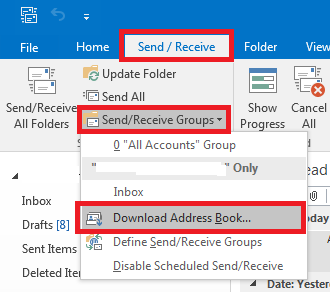
The four-digit hexadecimal value represents the language locale ID. The lng string represents OAB file types for Windows, whilst a string of “mac” (not shown in Figure 6) represents OAB file types for the Mac. LZX file names shown in Figure 6 have the string “lng” in them, followed by a four-digit hexadecimal value. LZX extension is derived from the fact that the files are compressed using the LZX compression algorithm. These files contain the OAB information that will be downloaded by the Outlook client.

You can also see that the folder contains many OAB files that have filename extension of. This GUID is the actual GUID of the OAB called Default Offline Address Book in the lab environment and you will see later that it can be used during the diagnostics logging process to confirm which OAB is being referenced when troubleshooting. It can be seen from Figure 6 that the actual ExchangeOAB folder contains a sub-folder named with a Globally Unique Identifier (GUID) and that the actual OAB files are contained within this sub-folder. On the server LABMBX, it is possible to navigate to the \Program Files\Microsoft\Exchange Server\V14\ExchangeOAB folder to view the actual OAB files as you can see in Figure 6.įigure 6: Contents of the ExchangeOAB Folder
#Get offline address book server series
You may remember from part one of this article series that the mailbox server LABMBX is currently configured to generate the OAB data you can confirm this by examining the Server attribute in Figure 5 back in part one the Server attribute is the second attribute listed from the top. Here in part two, we’ll start looking at the generation process. Let’s now turn our attention to understanding how the OAB files are generated and distributed to the client machines running Outlook. In part one of this article series, we examined the properties of the default OAB that is generated when Exchange 2010 is installed. This is the second part of an article series looking at the Offline Address Book (OAB) generation process in Exchange 2010. If you would like to read the first part of this article series please go to:


 0 kommentar(er)
0 kommentar(er)
